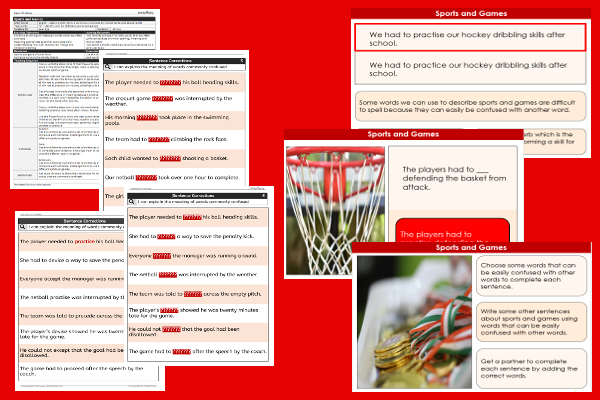Sports and Games

This English teaching pack for Key Stage Two gets the children to practise selecting and recording words that are commonly confused with each other to correct different sentences about a range of sports and games.
The class can compose some of their own example sentences illustrating the meaning of words that can be easily confused with each other by their spellings and meanings.
Download this teaching pack including a lesson plan, classroom activities and an interactive presentation to practise selecting and recording words that are commonly confused with each other to correct different sentences about a range of sports and games
Activities in this teaching pack include a set of differentiated worksheets to identify and record matching words that are commonly confused with some other words to complete a range of example sentences about playing different sports and games.
The interactive presentation gets the children to explore how to select words that are commonly confused to correct different sentences about a range of sports and games.
This lesson is part of an English scheme of work to get the children to practise using words that are commonly confused with other to correct and complete example sentences on different topics and themes. There are teaching activities for shared learning, differentiated worksheets to support independent learning and interactive presentations to introduce concepts and key skills.
-

Theme Park Visit
Practise identifying and calculating the timing and duration of rides and events when visiting a theme park on a special family trip
-

Family Holiday Trips
Identify and record how to compose and publish recounts using adverbials of time and place to describe family holidays to different places in the world
-

Money Multiplication
Explain and model how to use standard written calculation methods to multiply money amounts in pounds and pence when solving number problems
-

Sport Teams
Explain and model how to use brackets and dashes to add extra information to sentences describing how to play sports and games as part of a team
